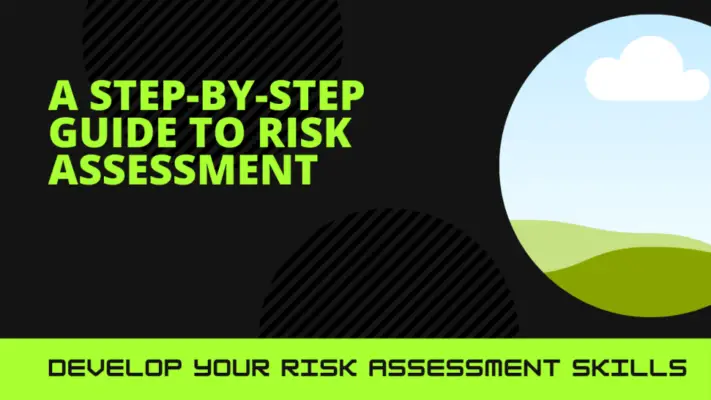Information security risk assessment, a pivotal component of an organization’s IT risk management strategy, encompasses identifying, quantifying, and prioritizing vulnerabilities in a system.
An effective assessment provides a layered defence against potential threats, ensuring integrity, confidentiality, and availability of information assets. This process supports informed decision-making regarding the allocation of resources for risk mitigation.
The ever-evolving landscape of cyber threats necessitates regular risk assessments to ensure the organization’s security posture remains robust.
This article delves into the concept and importance of an IT risk assessment, its execution, and the rationale for conducting such an assessment.
It aims to offer an insightful perspective using a data-driven approach, in light of the escalating relevance of cybersecurity in the contemporary digital era.
Recognizing the potential dangers of online security is crucial, and we must take immediate steps to assess and mitigate these risks. Conducting a comprehensive security risk assessment is essential to create a safer digital environment.

What is an IT Risk Assessment?
An IT Risk Assessment constitutes a systematic and methodical evaluation of potential threats, vulnerabilities, and impacts on an organization’s information technology infrastructure, thereby playing a pivotal role in safeguarding business operations and data integrity.
It is an intrinsic part of the information security risk assessment, ensuring the identification and management of security threats.
The IT risk assessment process is a crucial component of risk management, helping organizations prioritize security controls based on potential risk.
It aids in predicting and mitigating potential vulnerabilities in the IT system, thereby enhancing the overall security posture.
An IT risk assessment aims to provide a detailed, data-driven analysis of the existing security infrastructure, enabling organizations to make informed decisions for improved data protection and business continuity.
Why Conduct an IT Risk Assessment?
An IT Risk Assessment is critical in an organization’s strategic planning and operational efficiency by justifying costs, enhancing productivity, breaking barriers, and fostering communication.
The process provides a cost-effective solution by identifying potential threats and vulnerabilities, enabling businesses to allocate resources strategically to mitigate risks.
Moreover, it promotes productivity by ensuring system availability and data integrity, eliminates barriers through improved compliance with standards and regulations, and encourages communication among stakeholders by providing clear information about security issues.
Cost justification
Understanding the financial implications of potential security breaches, cost justification emerges as a crucial component in information security risk assessment.
It enables organizations to weigh the potential financial impact of threats against the cost of implementing protective measures.
The security risk assessment process illuminates the value of safeguarding intellectual property, critical business operations, and compliance standards.
A cost-effective cybersecurity risk management strategy considers both immediate and long-term costs. This comprehensive view encourages proactive interventions, reducing the likelihood of costly breaches.
Organizations can strategically improve their security posture while effectively managing their budget by quantifying the potential financial impact and justifying the cost of security measures and then allocating resources accordingly.
Productivity
Productivity, a key driver of business success, can be significantly affected by the level of protection against cyber threats. The impact on business processes and organizational operations can be severe, thereby affecting the achievement of business objectives.
- Business Continuity Plans: These are critical to ensure minimal disruption to business activities during a security breach. A robust security risk assessment informs the development and implementation of effective business continuity plans.
- Business Impacts: A cybersecurity incident can affect a business unit’s operations, causing financial losses, reputational damage, and potential regulatory penalties.
- Business Activities: A successful attack can disrupt routine business activities, reducing productivity and possibly losing competitive advantage.
- Business Processes: Integrating information security risk assessment into business processes enhances productivity by proactively identifying and mitigating potential threats.
Breaking barriers
In business, breaking barriers symbolizes the audacious journey of transcending conventional norms, challenging the status quo, and forging new paths to drive innovation and growth.
This concept plays a crucial role within the context of information security risk assessment, where businesses strive to overcome conventional security measures and go beyond basic risk analysis.
The key to breaking barriers lies in creating a robust risk treatment plan, which identifies and mitigates potential cybersecurity threats.
Businesses must recalibrate their risk tolerance levels, and adopt a comprehensive cybersecurity program that not only addresses current threats but also anticipates future vulnerabilities.
Thus, breaking barriers in information security risk assessment involves strategic foresight, innovation, and a commitment to continuous improvement.
Communication
Effective communication, particularly in the digital domain, is a pivotal element in driving business success, as it fosters efficiency, collaboration, and transparency across all levels of an organization. This is especially true in the realm of information security risk assessment.
- Security incidents can be mitigated or prevented entirely through clear, timely communication among business managers.
- Risk scenarios can be effectively managed and understood better using risk assessment software tools, which streamline communication and information sharing.
- A robust compliance program can only be established when compliance requirements are clearly communicated and understood across the organization.
Effective communication is essential for assessing potential risks and promptly addressing them. This reinforces the cybersecurity framework of the organization by ensuring that all potential threats are identified and dealt with in a timely manner.
How is an IT Risk Assessment Done?
The execution of an IT Risk Assessment necessitates several key steps to ensure an organization’s information security.
This includes identifying and cataloging information assets, which forms the basis for recognizing potential threats and vulnerabilities within the system.
Additionally, a thorough analysis of internal controls is required to evaluate their effectiveness, followed by an assessment to determine the likelihood of an incident occurring, thereby providing a comprehensive understanding of the organization’s information security landscape.
1. Identify and catalogue your information assets
Understanding and documenting an organization’s information assets is the initial step in an information security risk assessment. This process, often called ‘identify and catalog your information assets,’ involves a comprehensive review of all organizational assets.
This includes:
- Critical Information Assets: These are the key pieces of data that are crucial for the operation of the business. They may include customer databases, proprietary software, and financial records.
- Asset Inventory: This is a complete list of all agency assets, including hardware, software, and data. It should be maintained and updated regularly.
- Corporate Network: This constitutes all the IT infrastructure that supports the organization’s operations, including servers, workstations, and network devices.
Understanding these elements can facilitate a more effective information security risk assessment, addressing all potential vulnerabilities.
2. Identify threats
Once the task of identifying and cataloging information assets has been completed, it is imperative to shift focus to identifying potential cyber threats that could pose a serious risk to these assets.
An information security risk assessment must encompass the identification of threats that can exploit vulnerabilities. Cyber threats are manifold and constantly evolving; therefore, understanding them is imperative.
Threat actors, ranging from individual hackers to state-sponsored entities, employ many attack vectors, including common threats like injection attacks. Cybersecurity threats can originate externally or internally, requiring different mitigation strategies.
Detailed knowledge of these potential threats aids in creating robust defenses, thereby enhancing the overall security posture. This process underscores the need to be proactive and data-driven in identifying threats and implementing appropriate countermeasures.
3. Identify vulnerabilities
Identifying vulnerabilities within an organization’s digital infrastructure is the next crucial step in fortifying its cyber defences.
This process, known as vulnerability assessments, involves network scanning tools to identify weaknesses or security gaps in critical systems, providing a comprehensive picture of the organization’s attack surface management.
Detailed vulnerability analyses can highlight areas of concern, helping to prioritize efforts for remediation. The table below provides a snapshot of the key steps in identifying vulnerabilities.
| Step | Task | Tools |
|---|---|---|
| 1 | Network scanning | Automated scanning tools |
| 2 | Identify vulnerabilities | Vulnerability databases |
| 3 | Prioritize vulnerabilities | Risk assessment tools |
| 4 | Remediate vulnerabilities | Patch management tools |
This systematic approach can significantly reduce potential risks, strengthening the organization’s overall security posture.
4. Analyze internal controls
After identifying vulnerabilities, the next step in the information security risk assessment process involves analyzing internal controls.
An extensive examination of the control infrastructure within an organization is imperative in ensuring that existing security policies effectively mitigate potential risks. This involves a close review of control frameworks and the execution of internal audits to identify gaps in the current system.
The business systems audit practice helps evaluate the efficacy of these controls concerning compliance activities. In cases where deficiencies are detected, additional security controls may be recommended to enhance the overall security posture.
This in-depth analysis provides an invaluable understanding of the organization’s capacity to prevent, detect, and respond to security threats.

5. Determine the likelihood that an incident will occur
Evaluating the probability of a potential cyber incident is a critical step in any comprehensive cyber safety strategy. This process, often called cyber risk assessment, involves risk estimation to determine the likelihood of cybersecurity risks materializing.
A risk matrix is typically employed to map out the level of risk against the potential impact of an incident. The higher the likelihood and the impact, the greater the cyber risk. This systematic approach supports incident response planning, helping to prioritize resources and actions according to the assessed risks.
Organizations can better mitigate potential damages by understanding the probability and consequences of incidents. Thus, determining the likelihood of an incident is pivotal in enhancing the resilience of information security frameworks.
6. Assess the impact a threat would have
Understanding the potential implications of a cyber threat is a crucial component in developing a robust cyber safety strategy.
The assessment stage of a threat’s impact forms an integral part of the information security risk assessment process.
This involves scrutinizing the potential damages, losses, and disruptions a threat might bring, thereby enabling a comprehensive understanding of the organization’s cyber risk exposure.
Cybersecurity risk assessments provide a quantitative measure of the current risk level, offering critical insights into the necessary risk mitigations to be adopted.
Thus, through diligent risk evaluations, organizations can anticipate possible threats and prepare tactically, bolstering their resilience against ever-evolving cyber threats.
This approach aids in maintaining the integrity, confidentiality, and availability of an organization’s information assets.
7. Prioritize the risks to your information security
The process of prioritizing potential hazards plays a significant role in safeguarding an organization’s digital assets.
A comprehensive enterprise security risk evaluation involves adopting a risk-based approach, allowing security teams to prioritize the risks to their information security.
This approach aids in the identification of cyber risks that pose the most significant threat to the organization’s operational continuity.
This methodical prioritization not only improves the efficiency of the security teams but also ensures that resources are allocated based on the severity and potential impact of each risk, thereby enhancing the overall resilience of the organization’s digital infrastructure.
Reasons/Rationale for Performing a Security Risk Assessment
Conducting a security risk assessment proves integral to identifying potential threats and vulnerabilities in an organization’s information system, thereby facilitating the development of effective strategies to mitigate such risks.
It is a critical component of a complete risk management process. The rationale behind performing an information security risk assessment is manifold.
| Rationale | Explanation | Importance |
|---|---|---|
| Prevent Cyber Attacks | Provides a complete picture of the risk landscape | Reduces potential damage |
| Residual Risk Management | Understand risks that remain after controls are implemented | Helps in resource allocation |
| Comprehensive Risk Assessments | Ensures a holistic view of enterprise security risk assessment | Provides a complete picture of risk landscape |
Through comprehensive risk assessments, organizations can manage cyber risk effectively, preventing cyber-attacks and managing residual risk. Therefore, an information security risk assessment is crucial for ensuring robust enterprise security.
Frequently Asked Questions
What qualifications should an IT risk assessor have?
An IT risk assessor should possess qualifications including a bachelor’s degree in computer science or a related field, expertise in risk management, proficiency in IT systems, and relevant certifications such as CRISC or CISA.
How long does it typically take to complete an IT risk assessment?
The duration for completing an IT risk assessment varies, typically ranging from a few weeks to several months, depending on the complexity and scope of the IT environment. Comprehensive assessments require meticulous evaluation, thus affecting the timeframe.
What common mistakes are made during an IT risk assessment and how can they be avoided?
Common pitfalls during IT risk assessments include inadequate understanding of threats, overlooking vulnerabilities, and improper risk evaluation. Avoidance requires comprehensive threat analysis, regular system updates, and rigorous evaluation methodologies.
How frequently should an IT risk assessment be performed?
An IT risk assessment should ideally be conducted annually. However, this frequency may vary depending on factors such as changes in the IT environment, regulatory requirements, or significant business transformations.
Can an IT risk assessment be done remotely or requires on-site evaluation?
An IT risk assessment can be conducted remotely, employing advanced technological tools and methods. However, certain circumstances may necessitate an on-site evaluation to comprehensively understand potential vulnerabilities and threats.

Conclusion
It is imperative to conduct an IT risk assessment to guarantee information security. This method is essential in identifying, evaluating, and mitigating possible threats to an organization’s information system in a proactive manner.
Hence, conducting regular risk assessments is instrumental in minimizing vulnerabilities, enhancing system security, and ensuring business continuity.
Moreover, the insights gained from these assessments can aid in strategic decision-making, bolstering organizational resilience and growth in the digital era.

Chris Ekai is a Risk Management expert with over 10 years of experience in the field. He has a Master’s(MSc) degree in Risk Management from University of Portsmouth and is a CPA and Finance professional. He currently works as a Content Manager at Risk Publishing, writing about Enterprise Risk Management, Business Continuity Management and Project Management.

